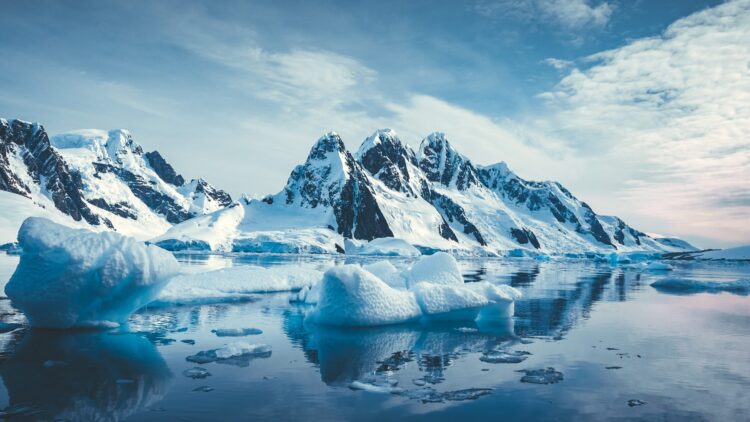For decades, Antarctica has been considered one of the most untouched places on planet Earth. Its icy waters and marine ecosystems, characterized by unique and long-lived species, have remained isolated from most human activities around the globe. However, a group of international scientists has managed to capture, for the first time, following extensive research, the direct consequences of the anchoring of ships on the delicate seabed of the Southern Ocean, an act that until now had gone completely unnoticed.
The recordings reveal a disturbed landscape: disturbed sediments, crushed giant marine sponges and visible damage to colonies that could take decades, even centuries, to recover. This discovery reflects the global impact of climate change and how far beyond the ice it has gone.
This study, led by researcher Matthew Mulrennan and supported by the organization KOLOSSAL, not only documents the impact of this practice, but also highlights an issue that threatens ecological integrity. The increase in tourist, scientific and fishing routes multiplies the risk of these human footprints becoming permanent scars.
Antarctica under silent threat
Anchoring ships may appear to be a routine action, without serious consequences, but in reality it is a silent threat to the seafloor. Dropping anchors and chains causes physical damage that alters the structure and composition of the sediments and the communities that live in them. In the Southern Ocean, where benthic ecosystems grow and evolve at an extremely slow rate due to low temperatures, these disturbances can have devastating long-term effects.
Images captured at 36 locations near the Antarctic Peninsula and South Georgia Island show clear signs of this disturbance. Deep grooves can be seen in the seabed, the result of dragging chains and anchors, which have left indelible marks on the ground.
Giant volcanic sponges, organisms that can be up to 15,000 years old, are crushed or completely destroyed in the affected areas. These animals are essential to the ecosystem because they filter water, fix carbon and provide shelter and food for many other marine species such as octopuses, starfish and fish.
A unique ecosystem in danger
The importance of sponges and other benthic species lies in their fundamental role in the stability of the Antarctic marine ecosystem. By filtering large volumes of water, these sponges clean and recycle nutrients, helping to maintain habitat quality for numerous species. Their disappearance or significant damage can trigger a domino effect affecting the entire local food chain.
In addition, these marine communities act as natural carbon sinks, helping to mitigate the effects of climate change. The destruction of these organisms not only implies a loss of biodiversity, but also a decrease in the ocean’s capacity to absorb carbon dioxide, which can further aggravate global warming.
A worrying increase in maritime traffic
The retreat of Antarctic sea ice, a direct consequence of global warming, has opened up new shipping routes that were previously inaccessible. This has prompted a considerable increase in the number of vessels operating in these waters for tourism, scientific and fishing purposes. Although there are strict regulations for environmental protection in the region, the anchoring of ships lacks clear and effective regulations to limit their impact on the seabed.
The study by Mulrennan and his team documented the presence of at least 195 vessels anchoring in areas with depths of up to 82.5 meters. It is suspected that the actual number could be much higher. This human pressure on such a sensitive and slowly recovering ecosystem represents a direct threat that, if left unchecked, could cause irreversible damage.
Visual evidence we cannot ignore
The underwater images obtained during the investigation are clear and compelling. In the affected areas, the seabed appears torn up, with sediments removed and marine structures broken or missing. A short distance away, where anchors have not touched the ground, marine life continues to flourish, demonstrating the direct and localized impact of these human activities.
Matthew Mulrennan has emphasized that “anchoring is probably the most overlooked marine conservation problem on a global scale: it is out of sight, out of mind.” This statement highlights the urgent need to include this practice in environmental protection and sustainable ocean management agendas.
A reflection on human actions
This study invites us to reflect on how our actions, even those that seem harmless, have profound consequences in remote and vulnerable ecosystems. It is essential to develop specific regulations for anchoring in Antarctic waters, including restrictions on where and how to anchor, along with alternative technologies that reduce the need for physical contact with the seafloor. In addition, promoting responsible tourism and strengthening surveillance and control of maritime activities in the region are indispensable steps to preserve the biodiversity and functionality of these ecosystems.

